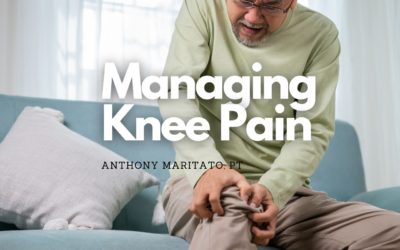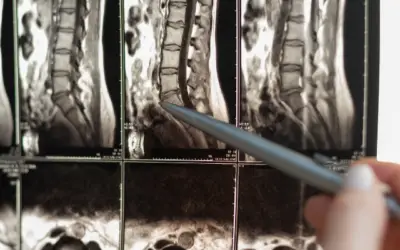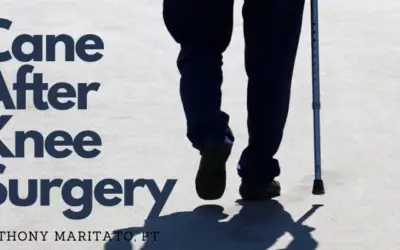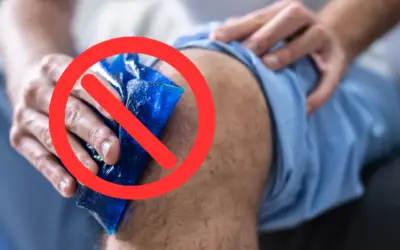How To Use A Stationary Bike After A Total Knee Replacement
An exercise bike is an excellent option after knee replacement surgery.
The adjustable seat and variable resistance can make it the perfect tool for increasing range of motion, improving endurance, and getting you back to the active lifestyle you enjoy.
Lightly used exercise bikes can be purchased on eBay and Facebook marketplace as well as second-hand retailers like Play It Again Sports.
New bikes may be purchased on Amazon or other sports retailers.
If possible, it is recommended that you purchase your bike before surgery in order to get a feel for riding it.
Top 4 Best Type of Exercise Bike To Rehab Knee
1.) Recumbent Bike
Recumbent bikes are the most popular bikes used in rehab for post-surgical care following a total knee replacement.
These bikes are most easily identifiable by the large seat and backrest.
If you would like more information about recumbent bikes and how to pick the best one for total knee replacement rehab check out this article.
2.) Upright Stationary Bike
An upright stationary bike has a seat positioned higher than the pedals and usually more over the pedals than a recumbent bike.
3.) Airdyne Bike
Although Airdyne is a model and not a type of bike, it deserves its own category.
The Schwinn Airdyne has been a classic bike for decades. Made of mostly all steel, this workhorse in the gym almost never breaks down and has helped countless individuals build strength and endurance but leveraging the power of the wind.
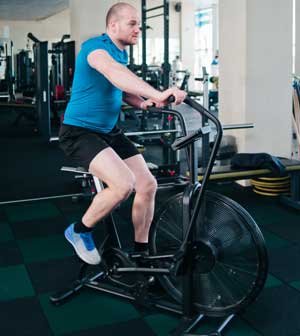
4.) Spinning Bike
A spinning bike has been popularized by spinning classes. This stationary bike is similar to a classic road bike. It has a small seat and positions the rider in more of a forward-leaning position. This bike is great for speed and endurance and is preferred by endurance athletes over recreational cyclists.
What Is A Recumbent Exercise Bike?
A recumbent bike is a type of stationary bike that has a larger seat with a full-length backrest.
It is often recommended for individuals with low back pain attributed to spinal stenosis.
It is differentiated from an upright, stationary bike because the pedals are positioned in front of the pelvis and the body is in a more reclined position.
Can I Do Too Much Exercise After Knee Replacement?
Absolutely YES!
Your body is no different than an Olympic athlete’s body. You need rest and recovery as much as you need exercise.
After a total knee replacement, your body has experienced a tremendous amount of trauma.
The pain levels are high which increases your stress hormones.
You aren’t sleeping very well which slows down your tissue healing.
And the emotional stress levels are usually through the roof so all of this makes for a challenging time for your body to recover.
During the first two weeks, you should get plenty of sleep, great nutrition, and focus on healing/recovery.
During the next three to six weeks your stamina will improve and your ability to move will skyrocket.
Finally, after 6 weeks the surgical incision will be healed and you will be ready to really start to increase the frequency and intensity of exercise.
Is A Bike Good For Limited Knee Flexion?
Yes! A bike is great for limited knee flexion if you want to improve your knee flexion.
An upright stationary bike is usually preferred over a recumbent bike because it required less knee flexion initially.
As your range of motion improves you may choose to move your seat closer to the pedals to continue to increase knee flexion.
How Much Knee Flexion Will I Need During Cycling?
This depends on the kind of bike you choose. A general rule of thumb is about 90 degrees of flexion to complete a full revolution. If you move the seat closer to the pedals you will need more.
If you cheat a bit and move your seat further away from the pedals you may complete a revolution with less knee flexion.
Next, as your range of motion improves you would move the seat closer to a more normalized position.
How Much Pain Can I Expect After A Total Knee Replacement (TKR)?
A total knee replacement is often considered more painful than a total hip replacement.
The first 24-48 hours after the procedure your anesthesia from the surgery will help manage the initial pain response.
Follow your surgeon’s guidance for dosing your medication, but many clients will say after the first 48 hours the pain may intensify but should always be manageable.
The pain should never reach the point of agony. A pain level of 7 out of 10 on the Mankoski Pain Scale is described as “Makes it difficult to concentrate, interferes with sleep. You can still function with effort. Stronger painkillers are only partially effective.”
If your pain levels reach a 7 it is recommended you contact your surgical team.
Can I Have A Knee Replacement Without Doing Physical Therapy?
Yes! The trend has been toward less physical therapy for individuals who do not have complications following a total knee replacement.
As a physical therapist myself, I would rather a client receive a couple of physical therapy sessions before surgery to better prepare for what is to come, than do less follow-up therapy as long you are progressing normally.
Is An Exercise Bike Good For Knees?
Yes, an exercise bike can be great for your knees. But so can lots of other exercise equipment.
The best piece of exercise equipment is the one you know you will enjoy.
I have worked with clients who use a treadmill every day and others who use a treadmill to hang clothes.
Is An Airdyne Bike Good For Knee Rehab?
One of my favorite exercise bikes is the Schwinn Airdyne. The ability to use the arms and legs in combination or just the arms or just the legs is a huge benefit.
The steel body of the bike also makes it last for a long time without the risk of breakdown.
I have seen these bikes resell on Craigslist and eBay for top dollar simply because they age so well.
Can I Use A Treadmill After Knee Replacement Surgery?
Yes, a treadmill can be a wonderful addition to a total knee replacement recovery program.
The treadmill offers a clean, flat, well-lighted surface to walk on.
Since you are probably a human being reading this post, you likely move through space on two feet. A treadmill is one of the most functional pieces of training equipment that allow you to weight-bear and walk the way you would in the community.

Anthony Maritato, PT
Physical Therapist
Anthony Maritato, PT has been a licensed physical therapist and private practice owner since 2006. Ohio license #PT011602.
Anthony has been passionate about helping patients recover from total knee replacement surgery as well as rotator cuff repair surgery.
More Blog Posts …
Managing Pain After Total Knee Replacement
Introduction to Managing Pain After a Knee Replacement Undergoing a total knee replacement is a significant medical procedure that can dramatically improve your quality of life. However, the journey to full recovery involves navigating through various challenges, one...
Total Knee Replacement Pain at Night
What to Expect Explore our comprehensive guide on managing 'Total Knee Replacement Pain at Night.' Learn about the causes of night pain, effective pain management strategies, best sleeping positions, and more. This article provides practical advice to help individuals...
Overview of Spinal Stenosis
Table of Contents What is spinal stenosis What are the symptoms of spinal stenosis How is spinal stenosis diagnosed What are the different types of treatment for spinal stenosis Where to find more information 1. What is spinal stenosis Spinal stenosis is a condition...
Spinal Stenosis Exercises to Avoid: During Knee Replacement Recovery
Spinal stenosis is relatively common among adults having a total knee replacement surgery. While spinal stenosis doesn't always impact total knee replacement recovery, when it does, it can be frustrating. Before I specialized in treating patients after a total knee...
Ride a Peloton After Knee Replacement Surgery
Table of Contents When can I return to riding my Peloton bike at home after a total knee replacement? Is a Peloton bike good physical therapy after a total knee replacement surgery? Will riding my Peloton too much wear out my new knee? How often should I ride my...
How to Use a Cane After Knee Surgery
Table of Contents Understanding the Purpose of Using a Cane after Knee Surgery How to Properly Use a Cane after Knee Surgery Common Mistakes to Avoid When Using a Cane Transitioning from a Walker to a Cane: When and How? Understanding the Purpose of Using a Cane after...
Ice Machine for Knee Surgery
Table of Contents Benefits of Using an Ice Machine After Knee Surgery How an Ice Machine Works Top Ice Machines for Knee Surgery Recovery How to Use an Ice Machine After Knee Surgery Where to Buy an Ice Machine and What to Consider Benefits of Using an Ice Machine...
Walking Your Dog After Knee Replacement Surgery: A Timeline for Recovery
Table of Contents Introduction Walking Your Dog After Knee Replacement Safety Considerations and Precautions Conclusion Introduction Hello, fellow dog lovers and knee replacement warriors! I'm Anthony Maritato, a licensed physical therapist specializing in post-total...
Top 5 Mistakes After Knee Replacement
In this article I will share my experience as a physical therapist and personal trainer of more than 22 years treating patients after total knee replacement surgery. I have seen patients who made every mistake possible and still had a great outcome following this...
Disadvantages of Knee Replacement Surgery
Table of Contents Introduction Pain Time Lost Cost Stress Post Surgical Risk or Complications Conclusion Introduction When considering treatment options for severe knee arthritis, one commonly considered intervention is knee replacement surgery. Despite its high...
